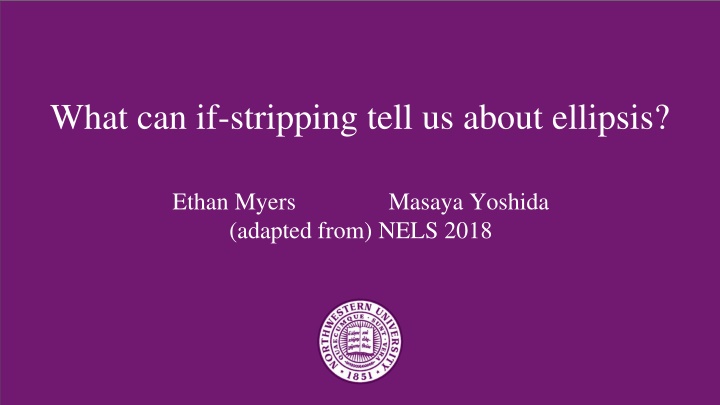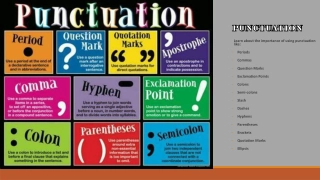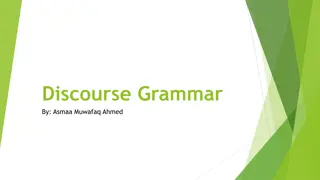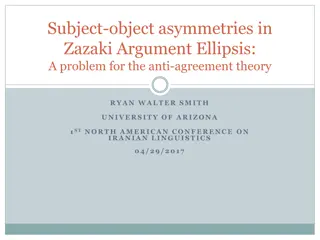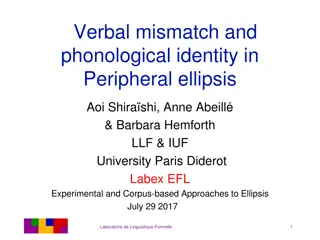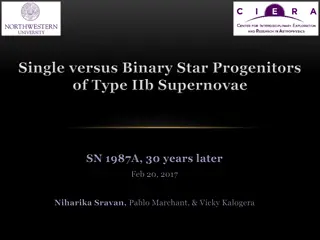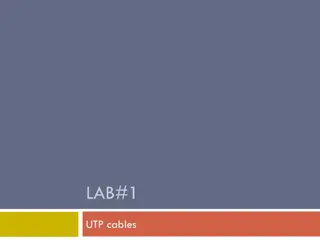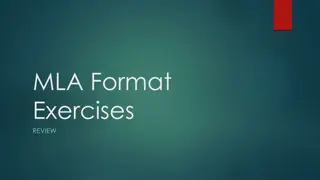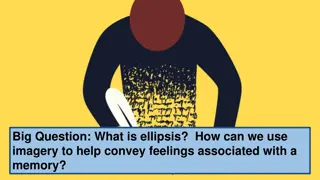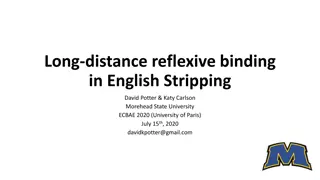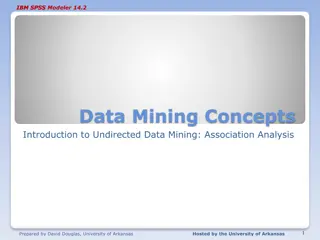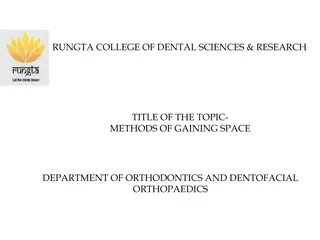Insights into Ellipsis from If-Stripping Analysis
If-stripping, a construction related to bare argument ellipsis, sheds light on the interpretational aspects of ellipsis in language. The presentation delves into terms, derivation, and implementation of stripping, highlighting how it can provide valuable insights into the nature of ellipsis structures. The discussion includes examples, analyses, and generalizations, showcasing the relevance of if-stripping in linguistic research.
Download Presentation

Please find below an Image/Link to download the presentation.
The content on the website is provided AS IS for your information and personal use only. It may not be sold, licensed, or shared on other websites without obtaining consent from the author.If you encounter any issues during the download, it is possible that the publisher has removed the file from their server.
You are allowed to download the files provided on this website for personal or commercial use, subject to the condition that they are used lawfully. All files are the property of their respective owners.
The content on the website is provided AS IS for your information and personal use only. It may not be sold, licensed, or shared on other websites without obtaining consent from the author.
E N D
Presentation Transcript
Title of Presentation What can if-stripping tell us about ellipsis? Names Ethan Myers Masaya Yoshida Venue/Conference & Date (adapted from) NELS 2018
What is Stripping? Stripping (aka Bare Argument Ellipsis; Depiante 2000) is a construction in which one sub-sentential constituent seems to have a clausal interpretation Can occur alongside a coordinating connective, negation, a modal, or a focus particle (1) Alan likes to drink whiskey, not Sally/wine (2) Alan eats a lot of food. Sally, too/but only sushi/maybe Italian. (Hankamer and Sag 1976:409). 2
Terms of Stripping Terms (See also Hankamer & Sag 1976, Reinhart 1991, Merchant 2004): Antecedent - The clause sharing identity with the ellipsis site Correlate - The constituent in the antecedent which contrasts with the remnant Particle - e.g. a coordinating connective, negation, a modal, or a focus particle (2) Remnant - The constituent which escapes ellipsis Ellipsis - silent recoverable structure (3) Correlate/Antecedent Prt. Remn. Ellipsis [Alan likes to drink whiskey], but not Sally likes to drink whiskey. (based on Hankamer and Sag 1976:409) 3
Deriving Stripping Analyzed as focus raising of the remnant and ellipsis of a clause (Hankamer & Sag 1976, Depiante 2000, Merchant 2004, Nakao 2009) The remnant escapes the elided constituent via focus-fronting (4) CP Ellipsis Remnant C TP ... C 4
Embedded Stripping (5) Embedded Stripping Generalization Stripping of embedded clauses is only possible when the embedded clause lacks a CP. (Wurmbrand 2017:344-5) (6) Jane [loves to study rocks], and John says geography1John loves to study t1 too. (Wurmbrand 2017:344, based on Lobeck 1995:27) (7) *Jane [loves to study rocks], and John says that geography1John loves to study t1too. (Lobeck 1995:27) 5
Implementing the ESG Assumes a derivation that proceeds via Dynamic Phases (Chomsky 2000, Gengel 2006, Wurmbrand 2017) (8) Assumes null complementizers signal the absence of a C projection Assumes ellipsis of TP (Merchant 2001, Merchant 2005, Nakao, 2009, Yoshida, Nakao, & Ortega Santos 2015) 6
Implementing the ESG (with Dynamic Phases)1 SOD with CP SOD with null CP (8) CP C FocusP That Focus Remnant Focus0 TP 1Chomsky (2000/2001),Gengel, K. (2008), Wurmbrand 2017 7
If-stripping Recall (7): *Jane [loves to study rocks], and John says that geography1John loves to study t1too. Now, consider (8): (8) [John is bringing drinks]. If whiskeyiJohn is bringing ti, I d like a smoky scotch. So then, what is the difference between if and that? We call (8) if-stripping. 8
If as a Complementizer Goal: to show that if behaves like a complementizer (and contradicts the ESG) Heads (like verbs) select for type and number of complements. i. Heads engage in selectional relationships with their complements ii. Heads and complements resist intervention by modifiers iii. Proform (e.g. do so ) replacement replaces constituents (such as a head) If behaves like other assumed C-heads in other respects (e.g. that) i. Overt C does not license Subj-Aux Inversion If-clauses are a complement of a V, headed by a C-head, if, and must be embedded 9
If as a Complementizer Prefer-verbs do not allow null arguments: (10) John preferred *(scotch/if Mary goes/that Mary goes). Verbs select for complements particular categories or semantic properties: (11) John prefers if/that/*whether/*why Mary goes. 10
If as a Complementizer Do-so replacement suggests that the subordinate clause is a complement to V: (12) John prefers [DPscotch]/[ CPif/that Mary goes and Susan does so] (*scotch/*if Jack goes). Modifiers may not intervene between a head and its complement: (13) John prefers (*seriously) [DP the first option] / [CPif/that Mary goes] (seriously). 11
If as a Complementizer If doesn t trigger doesn t trigger Subj-Aux inversion (14) (14) a. If Mary had left, John would be happy. b. (*If) Had Mary left, John would be happy. 12
Interim Summary if-clause that-clause Properties of Comp Categorial selection Adjacency of complement Do-so constituency test Subj-Aux Inverstion 13
If-stripping as genuine ellipsis Goal: to show that if-stripping is genuine ellipsis (i.e. not a cleft, and that there is silent structure) If there is silent structure we d expect contents of the silent structure to have consequences for the remnant, e.g. i. evidence of movement ii. c-command relations to bear consequences iii. preservation of idiomatic meaning iv. Sprouting effects 14
If-stripping as genuine ellipsis Stripping with implicit correlate (Merchant 2001:120-121): (15) A: They will serve dinner. B: If (*it is) to John, his mother will be upset. 15
If-stripping as genuine ellipsis Idiomatic meanings are preserved (Rottman & Yoshida 2013): (16) A: John made headway in his project. B: If (*it is) a lot of headway, we should congratulate him. 16
If-stripping as genuine ellipsis Reduced if-conditionals show binding connectivity effects (Chomsky 1981, Iatridou 1991, Merchant 2001): (17) a. A: John1is criticizing someone. B: If himself1, it is unfair. b. A: John1's friends are criticizing someone. B: *If himself1, it is unfair. (18) a. A: *He1was selling some pictures. B: If of John1, his mother will be upset. b. A: His1sister was selling some pictures. B: If of John1, his mother will be upset. 17
If-stripping as genuine ellipsis Fronted CPs require an overt complementizer (Bo kovi & Lasnik 2003, Merchant 2005:690): (19) a.*John is ashamed of that he drank too much. b. *(That) he drank too much, John is ashamed of. (20) A: John is ashamed of something. B: If *(that) he drank too much, then he shouldn't be. 18
Interim Summary If behaves like a Complementizer If-stripping seems to be genuine (clausal) ellipsis Therefore the ESG is too broadly defined, Dynamic Phase approaches may not be right for this BUT... What distinguishes if from that in the presence of Stripping? 19
A new analysis of if-stripping Our proposal relies some key assumptions: Split-CP model of the left periphery (LP) (Rizzi 1997) Full clausal syntax in conditional clauses (Haegeman 2003) Focus fronting involves movement to a dedicated projection in the LP, FocusP (Merchant 2004, Nakao 2009, Yoshida, Nakao, & Ortega-Santos 2015, Wurmbrand 2017, Potter 20017) If generates in a higher CP than the remnant (Bhatt & Pancheva 2002) That generates in a lower CP and raises to a higher position (Hagstrom 2001) Stripping targets a lower CP projection rather than TP (Baltin 2010, Van Craenenbroeck 2010) 20
Deriving if-stripping The analysis involves 3 components: (21) A. Fronting of Remnant B. Variable positions of C-heads C. Deletion of FinP C B (*that) A ... 21
Focus Fronting Fronting of arguments in conditionals is normally degraded (Haegeman 2003) The remnant is focus associated (22) If whiskey *(John is going to bring), I ll have a nice scotch. (23) If scotch/Sally/by car (not wine/John/by boat?) (24) Recoverability (Pesetsky 1997: 342) A syntactic unit with semantic content must be pronounced unless it has a sufficiently local antecedent. 22
Deletion of FinP Aux does not occur in matrix sluicing (Baltin 2010:331) (25) A: He1visited somebody2. B: *[FocPWho2[FinPdid [TPhe1visit t]]]? Shouldn t John go to the market, not (*should) the bar? (26) 23
Deletion of FinP French shows an overt finite complementizer cannot occur with Stripping. (27) A: Theresa Theresa Theresa will be bringing wine or whiskey. B: Si (qu') elle un vin rouge. If (that) she will-be-bringing a wine, I want If she brings wine, I want red wine. B: If wine, Si (*que) vin, I want If wine, I want red. apportera un vin ou du whisky. will-be-bringing a wine or a whisky. (28) apportera un vin, je voudrais a wine red. (29) je voudrais un vin rouge. a wine red 24
Deletion of FinP English and French finite verbs may not be Stripping remnants (30) John wanted to rent a boat not buy. (31) ??John rented a boat, not bought. (32) Jean veut visiter Jean want visit-inf Jean wants to visit Switzerland, but he doesn t want to spend a week in Italy. la Suisse, Swizerland mais pas passer but NEG spend-inf one week in Italy une semaine en Italie. (33) *Jean visite la Suisse Jean visits Jean is visiting Switzerland, but he isn t spending a week in Italy. (Morris 2008) mais pas passe une semaine en Italie. Swizerland but NEG spends one week in Italy 25
Variable C-head Positions Low origin of that explains anti-adjacency effects on subject extraction (Hagstrom 2001:15) (34) a. This is an amendment which they say that, next year, t will be law. b. This is an amendment which they say that t will be law. (Hagstrom 2001:15) Recall (30); the co-occurence of the two French complementizers. (35) B: Si (qu') elle un vin rouge. If (that) she If she brings wine, I want red wine. apportera un vin, je voudrais will-be-bringing a wine, I want a wine red. 26
Embedded Focalization It s been argued that embedded topicalization poses issues for a FinP deletion account (35) John thinks that geography, Jane loves to study. ((Hankamer and Sag 1976: 353) Wurmbrand 2017) However, again, the low origin of that in FinP and subsequent raising may account for this 27
Summary We ve seen that if-stripping presents a counterexample to generalizations about embedded stripping (The ESG) We ve seen evidence that suggests Stripping targets a lower C-head rather than TP We ve seen evidence that suggests dynamic phases may not be the best equipped to explain clausal ellipsis, as currently proposed 28
Questions 29
References Baltin, M. (2010). The nonreality of doubly filled Comps. Linguistic Inquiry, 41(2), 331-335. Bhatt, R., & Pancheva, R. (2002, March). A cross-constructional analysis of if clauses. In Syntax Seminar: interface in the CP domain, Zentrum fur Allgemeine Sprachwissenschaft, Berlin (Vol. 9). Bo kovi , ., & Lasnik, H. (2003). On the distribution of null complementizers. Linguistic Inquiry, 34(4), 527-546. Depiante, M. A. (2000). The syntax of deep and surface anaphora: A study of null complement anaphora and stripping/bare argument ellipsis. Gengel, K. (2008). Phases and ellipsis. In PROCEEDINGS-NELS (Vol. 37, No. 1, p. 233). Haegeman, L. (2003). Conditional clauses: External and internal syntax. Mind & Language, 18(4), 317-339. Hagstrom, P. (2001). Handout for CAS LX 523 Syntax II . Hankamer, J., & Sag, I. (1976). Deep and surface anaphora. Linguistic inquiry, 7(3), 391-428. Lobeck, A. C. (1995). Ellipsis: Functional heads, licensing, and identification. Oxford University Press on Demand. Merchant, J. (2001). The syntax of silence: Sluicing, islands, and the theory of ellipsis. Oxford University Press on Demand. Merchant, J. (2005). Fragments and ellipsis. Linguistics and philosophy, 27(6), 661-738. Morris, A. (2008). Polarity ellipsis and negative stripping. Unpublished manuscript. http://babel. ucsc. edu/~ hank/PolarityEllipsisandNegStripping. pdf. Nakao, C. (2009). Island repair and non-repair by PF strategies (Doctoral dissertation). Overfelt, J. (2018). Stripping in temporal adverbial constructions. Proceedings of the Linguistic Society of America, 3(1), 68-1. Potter, D. (2017). The Island (In) Sensitivity of Stripping. (Doctoral dissertation). Reinhart, T. (1991). Elliptic conjunctions-non-quantificational LF. Rizzi, L. (1997). The fine structure of the left periphery. In Elements of grammar (pp. 281-337). Springer, Dordrecht. Rottman, I., & Yoshida, M. (2013). Sluicing, idioms, and island repair. Linguistic inquiry, 44(4), 651-668. Wurmbrand, S. (2017). Stripping and topless complements. Linguistic Inquiry, 48(2), 341-366. Yoshida, M., Nakao, C., & Ortega-Santos, I. (2015). The syntax of why-stripping. Natural Language & Linguistic Theory, 33(1), 323-370. 30
Argument for TP in ellipsis site Some accounts of Stripping argue for a [FocusP[VoiceP[...]] structure. (Weir 2012) However, BCC effects suggest that A-mvmt through TP has taken place (36) Yoshida 2016) a. A: He1seems to Mary's friends to be a great linguist. (Hunter & B: *Not to John1's friends. b. A: It seems to Mary's friends that he1is a great linguist. B: Not to John1's friends. (37) a. A: He1seems to some people to be a nice person. B: *If to John1's classmates, they must not have played poker with him1. b. A: It seems to some people that he1is a nice person. B: If to John1's classmates, then they must not have played poker with him1. 31
Spanish que in stripping Spanish allows ellipsis under embedded finite complementizers (Weir 2014) (38) A: Qui n rob los libros? Who stole the books B: Creo que tu hijo. Think.1s that your son. 32
Interrogative and other if-Stripping This approach may overgenerate: Why isn t Stripping observed in the following environments? (39) *Mary said she would invite someone, but I didn't ask her if Bill she would invite. (40) *Mary said she would invite someone, I d prefer if Bill she would invite. 33
